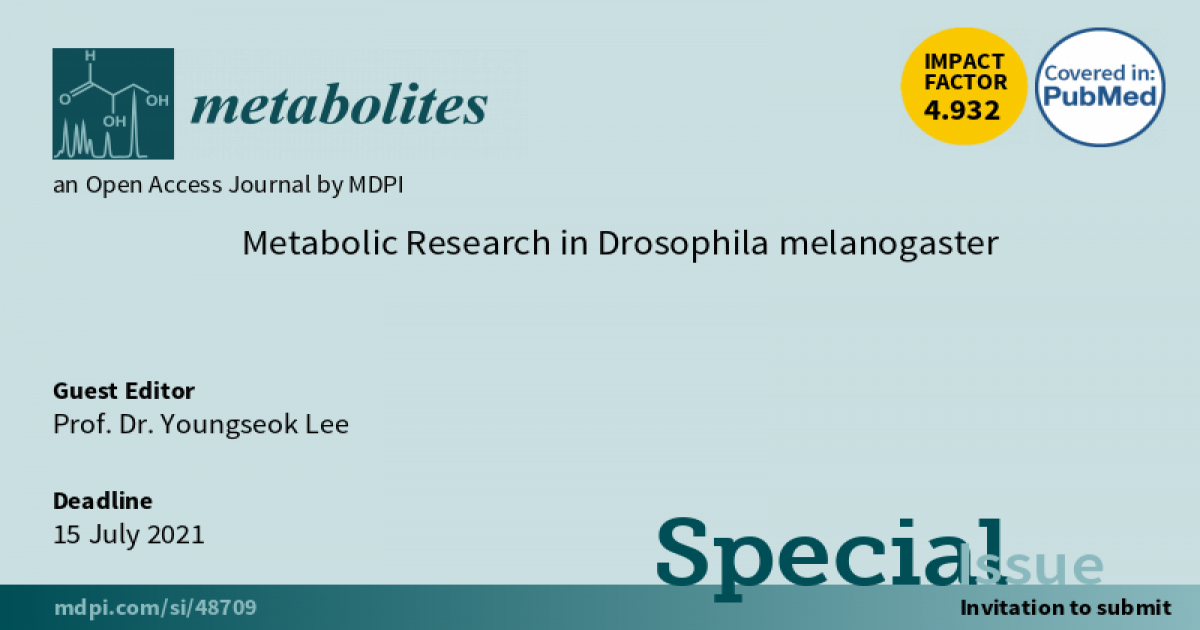Metabolic Research in Drosophila melanogaster
A special issue of Metabolites (ISSN 2218-1989). This special issue belongs to the section "Cell Metabolism".
Deadline for manuscript submissions: closed (15 July 2021) | Viewed by 7668

Special Issue Editor
Special Issue Information
Dear Colleagues,
The small insect Drosophila melanogaster, or vinegar fly, represents one of the most famous model organisms in genetics and biomedical research. As a trackable model organism, the D. melanogaster research toolbox contains many functional genetics tools, as well as genomics tools, such as transcriptomics, proteomics, and metabolomics. D. melanogaster has 20,000~25,000 genes (humans ~35,000) and 0.1 million neurons (humans ~100 billion). About 75% of known human disease genes have a recognizable match in the genome of vinegar flies. Furthermore, 50% of fly protein sequences have mammalian homologs. The fly is being used to study mechanisms underlying aging and oxidative stress, immunity, diabetes, circadian rhythm, cancer, and drug abuse. This Special Issue is devoted to recent applications of metabolic research to study the metabolism in D. melanogaster. However, it is not limited to the D. melanogaster, so research concerning other insects, such as mosquitoes and bees, is also welcome. We are happily considering original articles and technically updated protocols, as well as review articles, devoted to different aspects of the field of research.
Prof. Dr. Youngseok Lee
Guest Editor
Manuscript Submission Information
Manuscripts should be submitted online at www.mdpi.com by registering and logging in to this website. Once you are registered, click here to go to the submission form. Manuscripts can be submitted until the deadline. All submissions that pass pre-check are peer-reviewed. Accepted papers will be published continuously in the journal (as soon as accepted) and will be listed together on the special issue website. Research articles, review articles as well as short communications are invited. For planned papers, a title and short abstract (about 100 words) can be sent to the Editorial Office for announcement on this website.
Submitted manuscripts should not have been published previously, nor be under consideration for publication elsewhere (except conference proceedings papers). All manuscripts are thoroughly refereed through a single-blind peer-review process. A guide for authors and other relevant information for submission of manuscripts is available on the Instructions for Authors page. Metabolites is an international peer-reviewed open access monthly journal published by MDPI.
Please visit the Instructions for Authors page before submitting a manuscript. The Article Processing Charge (APC) for publication in this open access journal is 2700 CHF (Swiss Francs). Submitted papers should be well formatted and use good English. Authors may use MDPI's English editing service prior to publication or during author revisions.
Keywords
- Drosophila melanogaster
- Metabolism
- Metabolic regulation
- Feeding
- Insects
- Metabolomics






